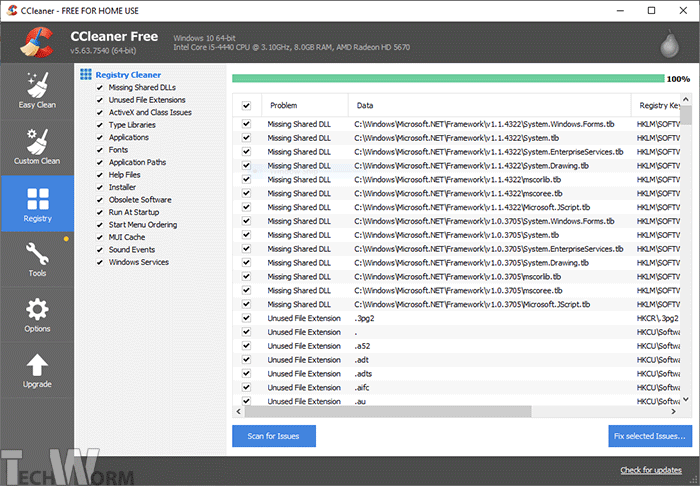

The Windows Registry Editor in Windows 10 allows you to review, change, and delete registry entries. The Windows Registry Editor will then open, allowing you to review, change or delete registry entries (Figure 1). Type "regedit" into the search dialog in the Windows 10 taskbar, and then click the Registry Editor app that appears in the search results. You can access the registry database with the native Windows Registry Editor tool. The registry can hold hundreds of thousands of entries. docx files, Windows would detail that selection in the registry so that it "remembers" the default application. For example, if a user selects an application as the default program for a specific file type, such as selecting Microsoft Word to open. It is a huge configuration file that Windows uses to detail interactions with hardware, software and users. In the simplest terms, the Windows registry is a database of settings and selections. Do not change or save any changes to a registry unless you are absolutely certain of the change. Improper changes to the registry can result in system instability and other functional problems. Warning: Before you attempt a Windows registry cleanup, it's important to note that the registry is a critical part of Windows systems. However, decades of its evolution have brought confusion about the need for registry maintenance.Īs a desktop administrator or Windows user, you should learn how the Windows registry works and review the best strategies for protecting and potentially optimizing a Windows registry.

Review the analysis results and click on the defrag or optimize button to start the defragmentation and compaction process, and again, you may need to restart your PC for the changes to take effect.Since the release of Windows 3.1, the Windows registry has served as a centralized database for system hardware details, user account information, application settings and more. Additionally, you should run the tool again and select the registry defrag option from the menu, click on the analyze or optimize button and wait for the tool to analyze your registry fragmentation and size.

You may need to restart your PC for the changes to take effect. Review the scan results and select the entries that you want to fix or delete, then click on the fix or clean button and wait for the tool to repair or remove the selected entries. Generally, you should run the tool and select the registry option from the menu, click on the scan or analyze button and wait for the tool to scan your registry for issues. After downloading and installing the tool of your choice, launch it and follow the instructions on the screen. Using these tools to clean and optimize your registry is relatively easy and straightforward.


 0 kommentar(er)
0 kommentar(er)
